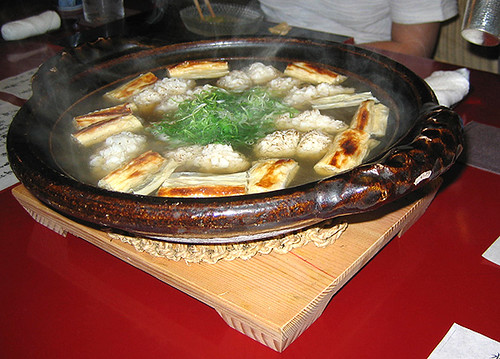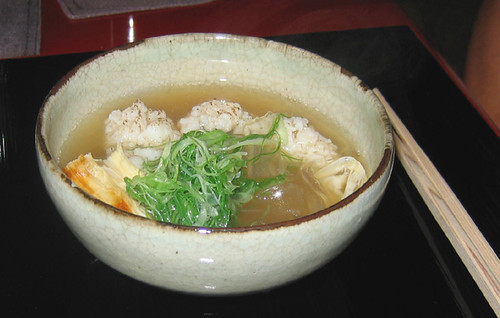I grew up loving Hamo in Japan. Being from Nagoya, we really did get to enjoy the best of both worlds - Kansai (Western) and Kanto (Eastern) treats graced our tables with equal frequency. Although Tokyo-ites may eat more like Kyoto-ites, the height of Japanese cuisine is at Kyoto for me. Because Kyoto is not near any seaside ports and lacked the general availability of fresh fish, they had to be creative in their culinary styles and techniques to compensate for their lack of fresh ingredients.
Hamo is the perfect example.
Hamo was one of the few fish that could be transported from the ports to Kyoto alive. Unfortunately, hamo is also full of bones. I mean - FULL of bones. There is no way one can slice a piece of hamo into nice, clean sashimi bits. So, what did they do in Kyoto? They created a new way to eat fish.
Known as hone-giri (bone-cutting) technique, hamo is prepared by mincing the bones but not the skin of the fish. The chefs work on the fileted fish with great care and concentration as they slice the bones into pieces while maintaining the general structure and skin in tact. When the fish is fresh, the resulting flesh opens up like a flower into a gorgeous white bloom when blanched - perfect Botan (Peony hamo).

We had Hamo in Kyoto as a nabe (hot pot). In a perfect, pristine, clean broth, the hamo and grilled negi (green onion-ish leek-ish scallion) was a match made in heaven. The sizzled grilled fragrance of the sugar from the negi accentuated the delicate flavor of the hamo. The soft hamo flesh and its slightly chewy skin contrasted the multiple layers of the negi, each bite offering a different sensation.

But the truth is, I preferred hamo prepared differently. I hate to admit it, but I am not as adventurous as I like to be. I like familiar foods and familiar tastes. I like to adventure, but I still like the same dishes I grew up with best. Here I was, sitting at one of the oldest inns in Kyoto, one of the oldest cities in Japan, eating one of the most traditional fish in Kyoto, and I was wishing for the hamo I grew up with in Nagoya!
In Nagoya, we always had hamo in a more traditional way - blanched and served with a ume (plum) sauce. We did have hamo again later in Nagoya cooked that way, but that is a story for another night...
2 comments:
Yeah, I prefer hamo the other way as well. And you post is making me hungry!!! :)
Beautiful photos. Looks very oish-kata!
Post a Comment